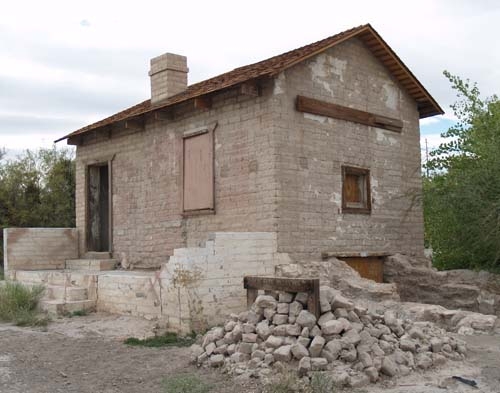North Las Vegas plan to restore Kiel Ranch fails to silence critics

North Las Vegas finally is making progress toward restoration of the historic Kiel Ranch, the long-neglected home of one of Nevada’s oldest buildings and site of three infamous local slayings.
But preservationists who for decades watched the site deteriorate say the city’s efforts are too little too late.
“They definitely haven’t done enough, and nowhere near what they could have done,” said Joe Thomson , president of the Preservation Association of Clark County. “It’s just an incredible shame to devastate this site the way they have over time.”
The City Council on Wednesday unanimously approved spending $381,200, mostly in Southern Nevada Public Land Management Act funds, for design services and construction management support in connection with eventually turning the 7-acre ranch into a park and scenic overlook.
The cash-strapped city is doing all it can to restore the ranch “as funding comes available,” Mayor Shari Buck said.
The city renewed efforts to clean up and develop the ranch on Carey Avenue near Commerce Street nearly six years ago after community members expressed outrage that Kiel had been allowed to deteriorate.
The site, listed on the National Register of Historic Places and home to natural wetlands, had become weed-choked and was sometimes used by homeless people as an encampment.
The city soon began cleanup and clearing non-native vegetation. The council in 2009 approved a $5.4 million long-term plan for the ranch, but funding for much of it remains uncertain.
Historians believe Kiel was settled in either 1855 or in the 1870s by American Indians with help from a group of Mormons.
The ranch was the site of the 1884 shooting death of neighboring landowner Archibald Stewart, husband of Nevada matriarch Helen Stewart. No one was ever prosecuted in the case.
The 1900 shooting deaths of ranch owners and brothers Edwin and William Kiel also occurred there. The deaths were ruled a murder-suicide at the time. But anthropologists later determined someone else had killed the brothers.
The bodies of several Kiel family members, including the brothers, were exhumed from the ranch in 1975 and stored at the Department of Anthropology at the University of Nevada, Las Vegas.
City officials requested the removal, according to a retired UNLV anthropology professor, because of concern the bodies might be damaged during restoration work.
But Thomson believes the bodies should have been returned long ago.
“It is reprehensible to see the remains removed and never replaced,” he said.
The city sold off much of the ranch’s original 27 acres, now covered by industrial development.
Buck said the city had “grand plans” for the site as early as the 1970s but “most of the land was sold off.”
“I think we’re doing the best we can with what was left to work with,” she said. “But there’s not a whole lot left.”
Stabilization and restoration of a crumbling adobe building at the ranch was completed last year using grant funds and some of the roughly $450,000 the city earmarked long ago toward preserving the ranch. About $300,000 remains in that preservation fund.
Local historian Michael Green said work on the building was an important first step. But, he said, “I wish they had gotten to it a long time ago.”
The city has neglected the site so long “when you see a sign of action, it’s hard to get excited anymore,” Green said.
Officials recently learned the city will receive nearly $350,000 in grant funds from the Bureau of Land Management to restore the ranch’s natural springs, said Mike Henley, deputy director of community services and development.
From the city’s standpoint, the ranch’s restoration “is moving at a fairly good pace,” he said. “The challenge is for us to find grants, apply for grants, wait for the grant cycle and marry up all the timing.”
The city, which has undergone several rounds of budget cuts and layoffs in recent years, can’t afford to foot the bill itself, Buck said.
City officials didn’t devote funds to the ranch in better times because of competing priorities, she said.
“Wants and needs are two different things. I have to balance those.”
Still, the city remains committed to the site’s eventual restoration, she said.
Another challenge will be maintaining the site with fewer staffers. The number of park maintenance workers in the city has shrunk from 41 to 12, Henley said.
“It’s definitely going to be a challenge taking care of existing parks as well as adding new ones,” he said.
Once the ranch’s restoration is complete, it will operate like a public park. For now the site is closed to the public.
The city has intermittently focused on restoring Kiel for decades. A restoration planned for the 1990s was thwarted by a fire that destroyed the ranch’s main building, the White House, in 1992.
Contact reporter Lynnette Curtis at
lcurtis@reviewjournal.com or 702-383-0285.